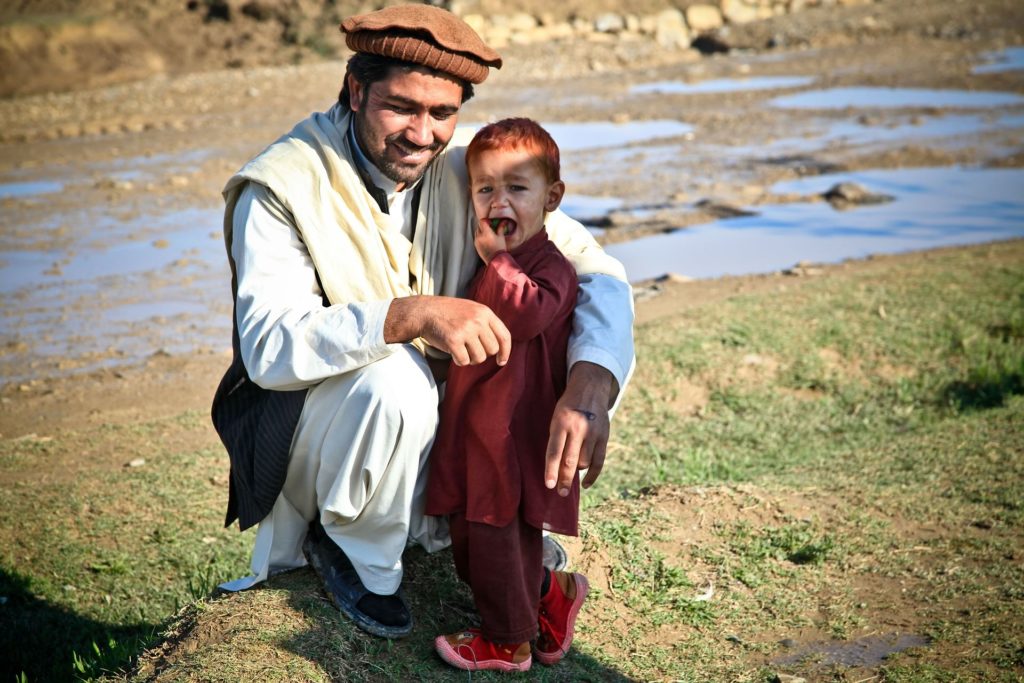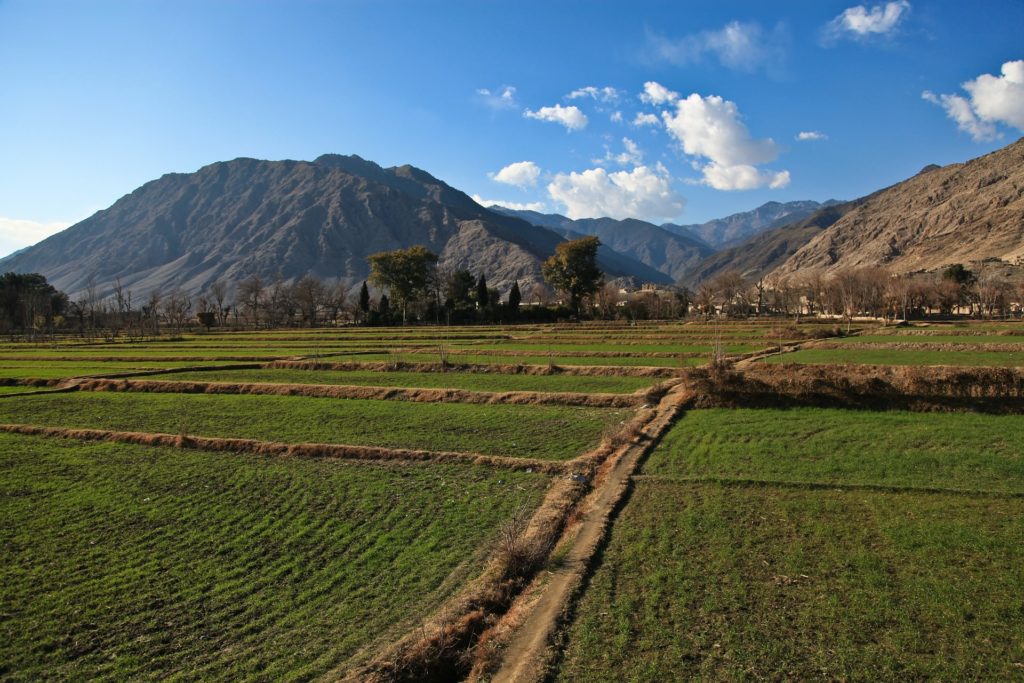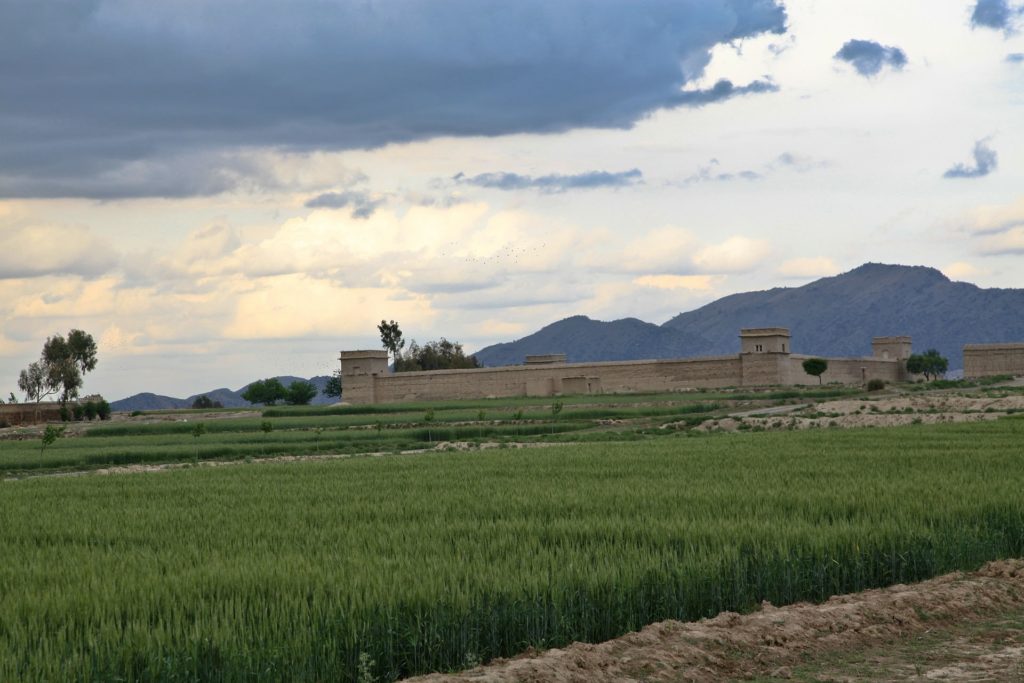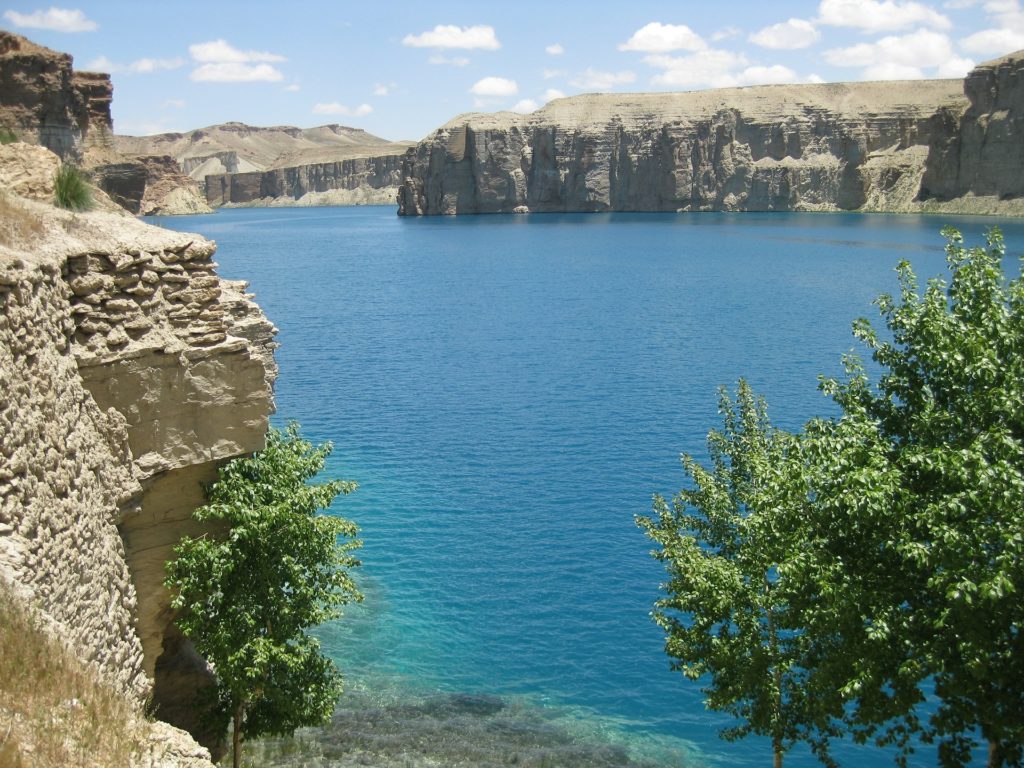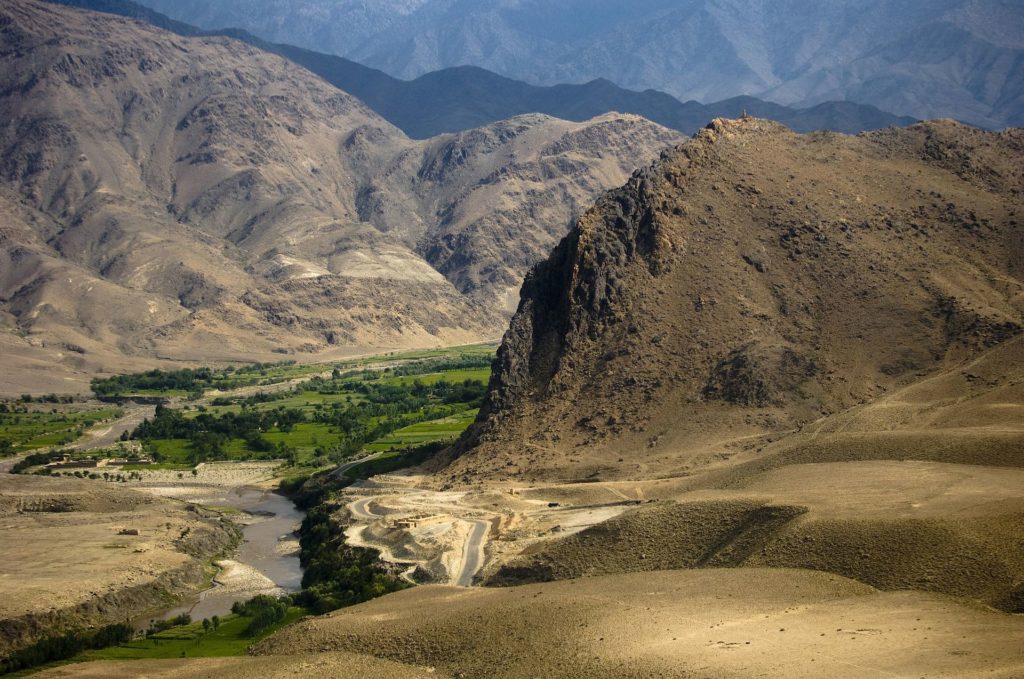Backpacking in Afghanistan
Afghanistan is undoubtedly a unique adventure for backpackers. Backpacking in East Asia, in South America – that has long been part of everyday life. But backpacking in Afghanistan? Only a few intrepid people are currently drawn to this exciting but crisis-ridden country in the Middle East. And so backpackers in Afghanistan are indeed taking a high risk, which should not be swept under the carpet here. In case of doubt, it is advisable to do without a little autonomy when travelling and actually join a travel group. But whether on your own or in a group, those who make their way to Afghanistan as backpackers will be rewarded with breathtaking landscapes and wonderful, hospitable people…
History of Afghanistan
Afghanistan is a state with about 27 million inhabitants in the Middle East. The country borders on Iran, Turkmenistan, Uzbekistan, Tajikistan, China and finally Pakistan, with which there has been a border dispute since 1947 resulting from an arbitrary demarcation by the former colonial power Great Britain (the so-called Durand Line).
The name “Afghanistan” literally means “country of the Afghans”. In 1747 Ahmad Shah Durrani founded a Pashtun kingdom, which today is regarded as the forerunner of modern Afghanistan. Ahmad Shah Durrani is regarded as the founder of Afghanistan.
The Afghans, however, celebrate August 17, 1919 as their Independence Day as the day on which they were liberated from British occupation – the country was also renamed “Afghanistan” only in 1919. In fact, Afghanistan was never officially a British colony. However, the British Empire had tried in various wars there to secure a supremacy in the region – it was mainly about the power conflict between the great powers of the Russian Empire and the Empire.
After independence, Amanullah made some attempts to reform traditional society. These reform movements were quickly reversed, however, as the balance of power in the country changed.
During the Cold War, Afghanistan again became a pawn of Western power interests. Afghanistan has been a virtually constant area of civil war since the 1970s, due to various conflicting inner-Afghan powers and, above all, the influence of Western powers. It is well known that this has intensified with the seizure of power by the militant Islamist Taliban in recent history and Western intervention.
Afghanistan’s economy
This disastrous security situation certainly also has a direct influence on the country’s economy. With a GDP of 21 billion US dollars, Afghanistan is one of the poorest countries in the world. Afghanistan is predominantly rural in character. 80% of the population lives in rural areas, only 20% in cities. At around 61%, the illiteracy rate in Afghanistan is very high. 84% of women and 51% of men between 15 and 49 have no school education at all, according to the World Bank study.
The (illegal) yields from opium cultivation, which reached new record levels in 2017, are not part of the GDP calculation. The drug economy is one of the country’s biggest problems. 9000 tons of opium were produced in Afghanistan, which is a large part of the world’s opium production. Poppy cultivation is lucrative for farmers and relatively crisis-proof. Attempts by the UN to destroy the harvests have proved counterproductive, as those who suffer are ultimately the farmers – who in case of doubt seek protection and support from the Taliban. You can also find a good overview of Afghanistan’s economic data here.
Culture in Afghanistan
Afghanistan is a multi-ethnic state with two dominant ethnic groups, the Pashtuns (historically: Afghans) and the Tajiks. Pashtuns represent about 42% of the population, Tajiks 27%. However, Tajiks are not actually an ethnic group, but a collective term for peoples and tribes of Iranian descent who speak Persian and are mostly Sunnis. Other larger groups are the Hazara (9%), who are of Mongolian origin, and Uzbeks (also 9%). There are also many smaller ethnic groups.
Afghanistan was Buddhist until the 10th century. Numerous cultural sites testify to this, including the famous Buddha statues of Bamiyan, which were largely destroyed by the Taliban in 2001. Unfortunately, only a few have managed to save this cultural heritage from destruction.
The most important languages are Dari (Persian spoken by the Tajiks) and Pashto (language of the Pashtuns). With about 5% Uzbek is also an important minority language. In addition, there are many other indigenous languages. Many Afghans are able to understand and speak both Dari and Pashto.
Literature and poetry
Literature and poetry play an important role in the culture of Afghanistan. Pashto literature is hardly known outside the country, but there are some literary pearls to be discovered, the first important representatives of which appeared in the 16th century. Pir Roschan and Khushal Khan Khattak are probably the most prominent representatives. Besides there is also a folk poem.
For a long time, Dari literature was predominantly lyrical. In the 20th century, however, novels and short stories were also written, which feed on traditional culture, but also question it critically to some extent. Important authors include Dschalaluddin Choschnawa, Suleiman Ali-Dschaguri and Azizurrahman Fathi.
In addition to the literary restaurant, there are several other cultural features worth exploring. One of them: Buzkashi. The Buzkashi game is a kind of national sport in Afghanistan – if you have the opportunity to attend such a spectacle, you shouldn’t miss it. In principle, it’s all about a horde of riders competing against each other to get a dead goat that’s been put down on the field and put it down in front of the judge. A high prize beckons – often a valuable animal. The victory is extremely prestigious. The game is spread throughout Central Asia, under different names and with smaller variations, also in western China among the Uyghurs it is found.
Cultural change and values
Due to recent history and the dominance of the Taliban, Afghanistan’s culture is in many ways strongly influenced by tradition and religion. Although over 80% of Afghans have a mobile phone and about 50% a television set, only 14% own a car, 35% a moped or motorcycle. This already shows how little infrastructure – and access to it – still exists in the country. Although there are now 16 TV channels again, the content is heavily censored and shows mainly Iranian and Indian films and series, which are very popular among the population.
The strong anchoring in tradition can be seen above all in the traditional understanding of gender roles. It has already become clear above that even elementary schooling for girls is often not considered necessary. Women are prepared for their role as housewives at an early age. They are rarely seen alone on the street. They are legally obliged to ask their husbands for permission to leave the house. They are also legally obliged to be sexually available to their husband at all times. Wearing a burqa is no longer a legal requirement, but most women wear it. In rural areas there is a tendency to see more women without a burka, as this is an obstacle to working in the fields. It should also be taken into consideration that there are often attacks against women on the streets, especially in larger cities. (You should also bear this in mind as a traveller – being alone as a woman can quickly become dangerous!
Last but not least: Homosexuality is not only frowned upon in Afghanistan, it is also forbidden by law. Also this is to be considered for LGBTQ travelers of course: If you travel as a same-sex couple, simply say, you are friends and hold yourselves back with everything which points to something else. Otherwise you will face severe penalties.
Backpacker Budget in Afghanistan
Travelling in Afghanistan, as in other countries of Central Asia and the Middle East, is in principle not very expensive. However, you are faced with the problem that many accommodations will not accommodate you because the security risk is too great – safe accommodations that accommodate foreigners are often more expensive. Couchsurfing is on the rise, but you can’t count on finding a couch everywhere. Your average daily budget with food and accommodation is around 45-70 €.
Costs arise above all from the fact that you have to bring along a certain flexibility. It is therefore not advisable to travel to Afghanistan with the literally last penny. It is always possible that you will have to change your route on the spot or travel by plane instead of land, or that you will be stuck for a few days and cannot find cheap accommodation. That is why you should always have some money in reserve.
The local currency is the Aghani (AFN). It is best to carry money in US dollars. ATMs can be found in cities like Kabul and you can usually draw money there, but you will find exchange offices almost everywhere in the country. So you play it safe.
Rental car in Afghanistan
Rental cars are best rented directly with a driver on site in Kabul. If you are lucky, the driver can even speak a little English. For a trip from Kabul to Masar-e Sharif you should calculate about 90€. These “rental cars” are unofficial long-distance taxis.
The road network in Afghanistan is not particularly well developed and in large parts already dangerous due to the general security situation. Most roads are not asphalted. There is a direct connecting road between Kabul and Masar-e Sharif, which is relatively safe and easy to drive on. There is also a new road from Kabul to Kandahar, but there are regular attacks on vehicles here, so it is not advisable to travel here as a backpacker.
Public transport in Afghanistan
There is an increasingly well-developed transport network between the larger Afghan cities. Some of them are served by minibuses or Toyota Corollas, which are long-distance taxis (see above).
Taxi driving in Afghanistan
Taxis do not have taximeters in Afghanistan. The price must be negotiated in advance with the driver. Offer the best 70% of the price that is suggested to you and then shimmy from there to a final price. Taxis are yellow and clearly recognizable. For 1€ you should come about 3-4 km far.
Bus driving in Afghanistan
Besides bus connections via the Khyber Pass (which may not be used by foreign travellers) there are some local buses and minibuses between the cities. Using them is not always recommended. If you have been recognized as a foreigner, it can happen that one of the passengers calls in advance, so that the bus is stopped and “checked”, be it with the aim of robbery or kidnapping. Of course, this does not always happen. But if you use local buses, try not to attract attention as a foreigner.
Rail travel in Afghanistan
There is currently no rail network for passenger traffic in Afghanistan. Three cargo routes in the north of the country have recently been established and passenger connections are being planned.
Backpacker Route in Afghanistan
The easiest way is to travel with an organized tour. Meanwhile there are again some companies that offer travel packages for Afghanistan. The tours are between 4 days and about 3 weeks long. Beside standard packages also individual routes are arranged. Who likes should look for example once at Untamed Borders or Let’s be Friends.
Of course you can also set off on your own on your own. Language skills or friends in the country are then a clear advantage.
Route 1: Afghanistan for those in a hurry (6-8 days)
- 1 day Kabul – Afghan National Museum, city tour
- 1 day flight to Bamyan – visit of the destroyed Buddha statues
- 1 day Band-e Amir – pure landscape in the lake landscape of Band-e Amir
- 1 day Bamyan – fortress Shar-e Zohak
- 1 day flight to Kabul
- 1 day Kabul – drive into the Panjshir valley, visit of the national hero Ahmad Shah Massoud
- 1 day Kabul – Departure
Route 2: Afghanistan intensive (approx. 14 days)
- 1 day Kabul – Getting to know the city and the Afghan National Museum
- 1 day flight to Bamyan – visit the remains of Buddha statues from the 6th century.
- 1 day Band-e Amir – Visit to the lakes of Band-e Amir
- 1 day Bamyan – visit of the fortress Shar-e Zohak
- 1 day flight to Kabul
- 2 days Kabul – trip to Panjshir valley, visit of the national hero Ahmad Shah Massoud
- 1 day drive to Masar-e Sharif
- 1 day Masar-e Sharif – visit the tomb of Ali Ibn Abi Talib, Bazaar
- 1 day Balch – city tour
- 1 day flight to Kabul
- 1 day Kabul – visit of the Bagh-e Babur, one of the remaining gardens from the Mogul time with the grave of the Mogul Babur
- 1 day Kabul – journey home
Travel times in Afghanistan
The climate in Afghanistan is continental. However, the enormous differences in altitude between the temperate zone in the north, the desert climate in the south and the subtropical climate are characteristic. High mountain climate prevails in the heights of Pamir and Hindukush.
The temperature differences are correspondingly strong. In the arid climate zones of the south, summer temperatures of up to +53°C are measured, in the heights of the mountain ranges of up to -51°C.
In order to avoid extreme temperatures when travelling, you should travel between April and May or October and November. In spring the weather is already pleasantly warm, the whole country is blooming. In autumn the temperatures are bearable again, the precipitation is low.
Backpacker accommodations in Afghanistan
Finding accommodation in Afghanistan as a backpacker is not easy. The problem is that many of the cheaper hotels and hostels do not accept tourists, as they have little or no security measures.
In Kabul and some other major cities, there are a few hostels that accommodate foreign travellers and have basic protection (mostly in the form of armed patrols). They usually cost between 10 and 30€ per night.
Neither Hostelworld nor Lonely Planet have lists of backpacking hostels in Afghanistan. But you can find and contact hostels via Google search and Facebook.
Otherwise there are only expensive expat hotels where security forces and journalists are accommodated – but here you have to dig deeper into your pockets and spend between 100 and 130€ per night.
Of course you can also stay overnight with locals. There is an active couchsurfing scene in Afghanistan – a good alternative if you don’t have any friends in the country. Not so recommendable: Spontaneously go along with locals. Of course, such offers will usually be harmless and well-intentioned, but they are potentially dangerous because you don’t know anything about your hosts. With all your enthusiasm for the country and its people, don’t forget that as a Western traveller you don’t create positive associations for a particular group of locals.
Backpacker Trips & Tips in Afghanistan
Traveling to Afghanistan, you must be aware of this at all times, is dangerous. Anyone who claims otherwise denies real dangers. When we talk about “safe” areas here, we always mean relative security. Afghanistan is still ultimately a war zone, and the security situation in all parts of the country can change on a daily basis. It is not for nothing that the Federal Foreign Office expressly warns against travelling to Afghanistan.
Therefore, when travelling, be sure to abide by the rules and laws of the country, do not draw unnecessary attention to yourself and try to remain as inconspicuous as possible as a foreigner. The Taliban sometimes pay premiums to informers who betray you.
Always take safety warnings, especially from locals, seriously. Always inform yourself actively on site whether your planned routes are still feasible and recommendable if you are on your own. If in doubt, it is better to improvise or, if necessary, break off the journey than to put yourself in unnecessary danger. Knowledge of the local language is always an advantage if you travel on your own, as many Afghans speak little or no English.
Backpacker Highlights in Afghanistan
Kabul is the first port of call for most travellers, at least if you arrive by plane. At the same time the capital is relatively safe and offers a lot to see and do. Among other things you should visit the Afghan National Museum, which takes you through the history and culture of this country – a great start for exploring Afghanistan.
One of the relatively safe areas for backpackers is Masar-e Sharif in the north of the country. The Prophet’s son-in-law, Ali, is said to be buried in Masar-e Sharif. The Mausoleum is an impressive, turquoise tiled building that is constantly surrounded by swarms of white pigeons – an absolute must on any trip to Afghanistan. Masar-e Sharif is also a centre of the carpet trade and carpet production. You can convince yourself of this at the Bazaar.
Only about 20 km from Masar-e Sharif lies Balch, the cultural cradle of Iranian culture and an important centre for Buddhism, Zoroastrianism and Sufism. If you’re in the area anyway, Balch is definitely on your To Do list!
Backpacker Insider Tips in Afghanistan
The Hindukush is a breathtaking mountain range that is perfect for trekking. However: Trekking is much too dangerous in wide areas. Relatively (!) safe are the Bamian region, the Panishir valley and the Wakhan corridor. The latter is only accessible at the Tajik border near Ishkishim, but you can’t get there from Kabul by land because the road between the two cities is too unsafe.
The Khyber Pass (which is actually on Pakistani territory) is one of the most interesting destinations for backpackers, especially if you want to travel on to Pakistan. The nearest city in Afghanistan is Jalalabad, in Pakistan the nearest city is Peshawar. In contrast to the alternative route between Pakistan and Afghanistan via the Bolan Pass, the Khyber Pass is normally accessible to travellers. However, you must obtain a permit in advance.
This is not always granted, and you should be prepared to improvise on the spot if you are denied further travel. This may be annoying for you, but it can still be in the interest of your safety. Don’t get carried away trying to hide in vehicles or bribe border guards. This adventure could turn out pretty bad.
The destroyed Buddha statues of Bamiyan are also a worthwhile destination. The once largest Buddha statues in the world from the 6th century were largely destroyed by the Taliban in 2001 because they were “un-Islamic”. Here everyone must decide whether a visit of the destroyed world cultural heritage is morally justifiable. After all you support the local economy with your visit, so that the knowledge cannot prevail that the destruction is wrong and detracts from the attractiveness of the country. Those who nevertheless decide to visit Bamiyan will still find beautiful frescoes in the many caves. The visit costs approximately 3,50€, a guide costs further 13€.
Food & Drinks in Afghanistan
Afghan cuisine is a mixture of oriental cuisine from the Middle East and the Indian subcontinent. Due to its location directly on the historic Silk Road, Afghanistan experienced the advantages of international trade early on. Foreign spices and dishes found their way into the region and helped to shape the unique culinary world of Afghanistan.
Rice dishes are typical of Afghanistan, but meat also plays a central role. Very popular are meat dishes with minced meat from which Köfte are formed. The Indian spice world is also found in Afghan dishes, Chinese tea is extremely popular and widespread. In contrast to the South Asian region, where the Tandoor oven is widespread, the dishes in Afghanistan are usually cooked in an open fireplace.
Afghans do not use cutlery. Bread is used to absorb liquid or soft food. As in India, the right hand is used for food, the left hand is considered unclean.
In Afghan families there is a very traditional division of labour – cooking is the responsibility of the woman. Recipes are thus passed on from generation to generation in the family.
In cheap kebab restaurants you pay about 2-3 € per meal. Slightly more expensive are upscale restaurants. There you usually pay about 8-10 €. Besides Afghan cuisine there are also many excellent Indian restaurants in Afghanistan. For your food budget you should calculate about 8 to 15 €/day, if you are inexpensive on the way.
Food in Afghanistan
Rice, often seasoned with saffron, Indian cormasauce, kebab from chicken or lamb are popular components of meals. Also always to it belongs flat bread (Naan or Lawash).
Dairy products, especially yoghurt, as well as lots of fresh vegetables and fruits are also part of an Afghan meal. Baklava is often served as dessert. Also popular (and incredibly delicious!): Gosh-e-feel. These fried pasta are supposed to remind of elephant ears and are sprinkled with pistachios, sugar and cardamom. In Afghanistan they are mainly served on religious occasions.
If you are invited to eat at home with Afghans, you may prepare yourself for opulent meals at which you are also expected to serve yourself abundantly at everything.
If you’re looking for good opportunities to eat out, it’s best to ask a local. Ask for his favourite Afghan restaurant if you want to enjoy the local cuisine, otherwise you may be sent to a local burger hut by younger Afghans in particular. (Which of course doesn’t have to taste bad!)
Drinking in Afghanistan
In the drinking culture of Afghanistan tea plays, as already mentioned, a very important role. As a rule, you will be served tea with every meal, often it is already included in the price of your meal. The most popular is green tea, which is usually very rich in sugar – for Europeans this can take some getting used to.
Buttermilk and drinking yoghurt (dug) are also very popular. Both are usually served with meals as well.
Very important to know: Alcohol is strictly forbidden in Afghanistan! This concerns the possession as well as the consumption of alcohol. As a foreigner it is strongly recommended that you adhere to this rule. Travelling in Afghanistan is not harmless anyway – you should therefore do everything not to endanger yourself additionally by violating elementary rules of this country. Apart from that, it is of course simply a question of respecting the foreign culture!
Backpacker Visa and vaccinations in Afghanistan
German citizens need a visa to enter the country. You can get this before your entry at an Afghan mission abroad, for example at the Embassy of the Islamic Republic of Afghanistan in Berlin.
With regard to the possible length of stay, the Embassy in Berlin currently states that tourist visas for single entry are issued for a period of 3 to 6 months. The indicated processing time is 14 days or longer in individual cases. You can enter Afghanistan with the following travel documents:
- Passport: Yes
- Temporary passport: unknown
- Identity card: No
- Temporary identity card: No
- Child passport: No No
- Your travel document must be valid for at least another 6 months when you enter Afghanistan.
The exact regulations for visas to Afghanistan are subject to constant fluctuations and may change at short notice. You can obtain initial information from the Federal Foreign Office when planning your trip, but the latter will not always be informed about all changes in a timely manner. Only the information from the consular missions of Afghanistan is legally binding – in any case inform yourself there directly shortly before the trip, even if you already have a visa.
Medical Information & Vaccinations for Afghanistan
Medical care in Afghanistan is not guaranteed in large parts of the country. This applies in particular to accidents and emergency care. The situation in Kabul is somewhat better.
Special vaccinations are not prescribed for Germans who do not enter via a country affected by yellow fever. However, all vaccinations recommended as standard by the Robert Koch Institute are urgently recommended. In addition, the polio vaccination should be refreshed if the last update occurred more than 10 years ago, as polio cases still occur in Afghanistan and the infection is transmitted via contaminated water. A hepatitis A vaccination as well as hepatitis B, typhoid fever, meningococcus and rabies during longer stays are also recommended.
Afghanistan is in the months April to November in low locations under 1800 m malaria-area. The less dangerous Malaria tertiana is predominant there, however, the more dangerous Malaria tropica occurs particularly in the south also. Vaccination and the carrying of malaria medication are recommended, as otherwise it can be difficult to get the urgently needed medication due to the generally poor supply situation.

